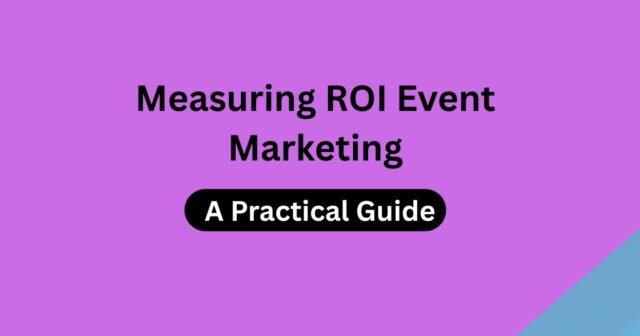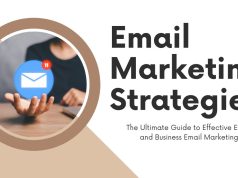Event marketing is one of the most dynamic ways to engage with your audience. Face-to-face interactions create lasting impressions, and well-executed events can elevate your brand to new heights. But how can you measure the return on investment (ROI) for these often expensive and complex marketing initiatives?
Understanding ROI in Event Marketing
ROI, or return on investment, measures the efficiency of an investment—in this case, your event marketing initiatives. Essentially, it’s how much revenue or benefit your event generates compared to the costs involved.
For event marketing, ROI could focus on a variety of outcomes, including:
- Revenue earned directly from the event, like ticket sales or product purchases
- Increased brand awareness or audience engagement
- Lead generation and conversions
- Strengthened client and stakeholder relationships
Calculating ROI often involves a simple formula:
ROI (%) = [(Revenue – Cost) / Cost] x 100
However, events often yield indirect benefits like increased brand awareness, which can’t always be measured in monetary terms. That’s why understanding your event’s goal is critical before measuring its ROI.
Why Measuring ROI on Event Marketing Is Crucial
Without understanding your ROI, it’s almost impossible to know whether your event marketing strategies are working. Measuring ROI will:
- Justify Your Investment: Stakeholders will want to know if the resources spent on event marketing brought real results.
- Identify What Works: By tracking ROI, you’ll learn which aspects of your event delivered value and where you can improve.
- Optimize Future Campaigns: ROI data helps you adjust your strategies to maximize effectiveness in future events.
- Demonstrate Value Across Teams: Proving your event’s success with ROI solidifies event marketing as a fundamental part of a comprehensive marketing plan.
Tailoring ROI Metrics to Event Goals
Before you can measure ROI, define what you aim to accomplish with the event. Here are a few goals and the corresponding metrics you might analyze:
Goal 1: Improve Brand Awareness
Metrics:
- Social media reach, mentions, and engagement rates
- Number of event attendees
- Increase in website traffic during and after the event
Goal 2: Generate Leads and Conversions
Metrics:
- Number of new contacts added to your CRM
- Email sign-ups or app downloads
- Sales directly attributed to the event
Goal 3 Deepen Customer Relationships
Metrics:
- Post-event surveys indicate satisfaction levels
- Attendee retention at multiple events
- Client testimonials or word-of-mouth referrals
Goal 4 Drive Direct Revenue
Metrics:
- Ticket sales
- On-site product purchases
- Post-event upsells driven by follow-up campaigns
Your goals determine where to focus your measurement efforts, as each metric above provides strong indicators for specific event objectives.
Steps to Measure ROI on Event Marketing
Now that you know what data to track, here’s a step-by-step guide to measure ROI effectively:
Step One: Define Clear Objectives
Every event should start with SMART goals (specific, measurable, attainable, relevant, time-bound). For example, instead of saying, “We want more brand awareness,” aim for something like, “We want to gain 1,000 new social media followers and a 10% increase in web traffic post-event.”
Step Two: Track ALL Costs
To understand ROI, you need an accurate estimate of what you spent. Include:
- Venue rental
- Speaker fees
- Marketing and advertising (social media ads, email campaigns, etc.)
- Staff and vendor costs
- Travel expenses
- Technology expenses (VR experiences, apps, or registration platforms)
This is your total “Cost” in the ROI formula.
Step Three: Capture Key Data at Every Stage
Use technology and tools to track valuable metrics before, during, and after the event:
Before the Event: Measure registrations, RSVPs, and pre-event engagement like website visits or newsletter sign-ups.
During the Event: Leverage tools like event apps, RFID badges, and QR codes to track session attendance, booth visits, or purchases onsite.
Post-Event: Send follow-up surveys, monitor social media buzz, and measure post-event sales or inquiries.
Step Four: Attribute Revenue Accurately
Revenue attribution is where things get tricky. To tie your event to outcomes:
- Use promo codes or unique URLs shared during the event to track new customers or sales.
- Implement event-specific landing pages to capture leads tied directly to the campaign.
- Leverage CRM systems or tracking software to connect attendee data with downstream sales.
Step Five: Analyze and Calculate ROI
Using all the data you’ve gathered, plug the numbers into the ROI formula. Compare the total revenue earned against the total costs to see if you came out ahead.
Step Six: Gather Qualitative Feedback
While numbers are essential, intangible outcomes like strengthened client relationships or positive attendee experiences also carry weight. Use post-event surveys or one-on-one discussions to gather insights.
Tools to Simplify Measuring Event Marketing ROI
Technology can significantly streamline ROI measurement. Here’s a list of tools to consider:
- Event Registration Platforms: Platforms like Eventbrite or Cvent track attendance and ticket revenue.
- CRM Tools: Salesforce or HubSpot can help track leads and conversions driven by your event.
- Survey Software: Use tools like SurveyMonkey or Typeform to gather feedback.
- Social Media Analytics: Platforms like Hootsuite or Sprout Social provide metrics on reach, engagement, and mentions.
Dozens of tools are available depending on your specific goals. Choose those that align closely with your event objectives.
Tips to Maximize Your Event ROI
- Pre-Plan Measurement: Map out how you’ll collect data before the event begins.
- Engage Your Audience Online: Amplify your event through live-streaming or social media campaigns.
- Retarget Leads Post-Event Use email campaigns and personalized offers to nurture newly acquired leads.
- Optimize for the Future: Ask for feedback from your team to identify new ways to improve operational and financial efficiency.
Prove the Value of Your Next Event
Event marketing is as much an art as it is a science, and measuring ROI ensures your efforts are as rewarding as they feel. By defining your goals, accurately tracking data, and calculating your outcomes, you’ll be better prepared to make future events even more impactful.
Not sure where to start? Take the guesswork out of tracking ROI and streamlining your events by adopting a tech-forward approach. Explore tools and software designed to track event data seamlessly. Start small, analyze your results, and refine with every campaign.
Remember, the true power of event marketing lies in how well you can measure and replicate your success.









